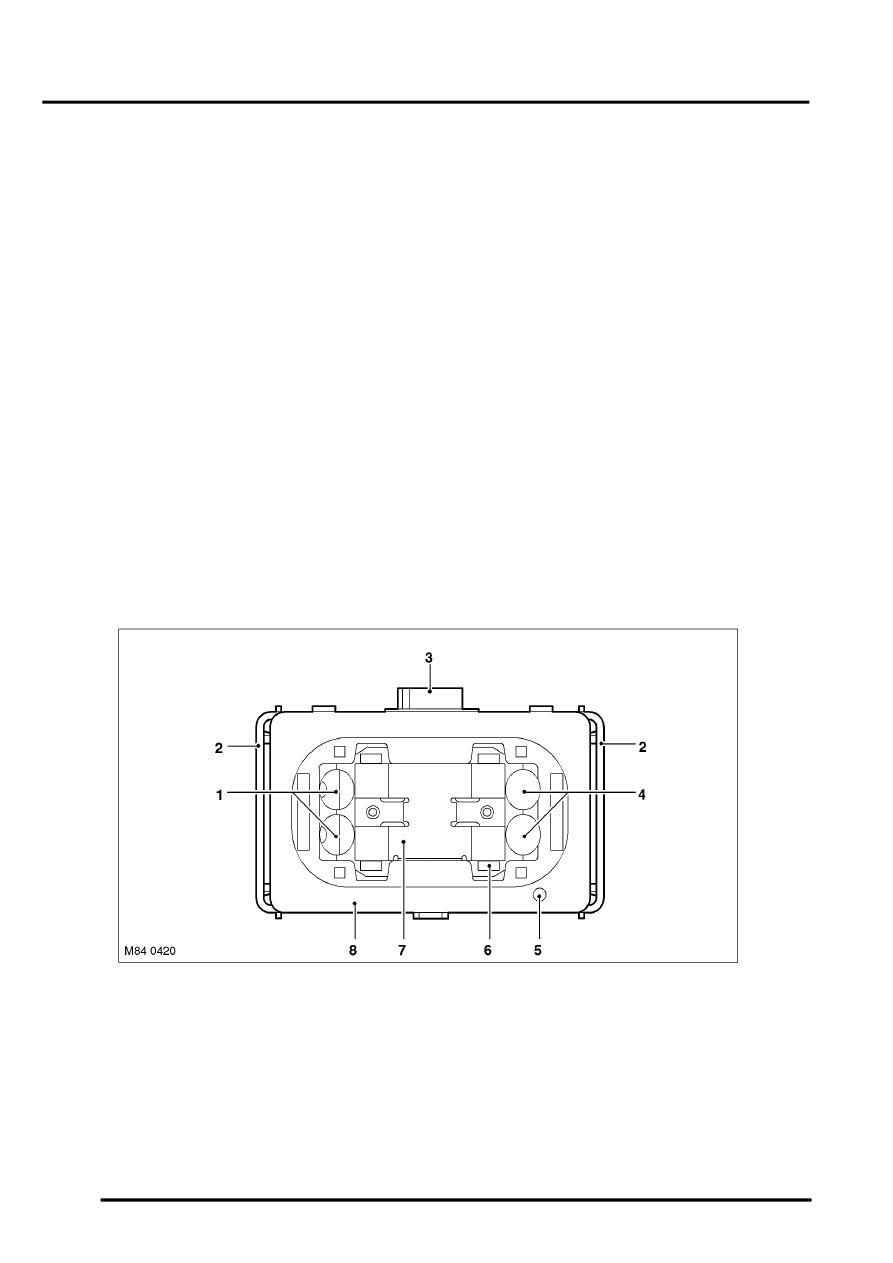L322 Range Rover System Description and Operation

WIPERS AND WASHERS
84-12
DESCRIPTION AND OPERATION
The sensor reacts to the influence of a magnetic field. A float, with integral magnet, is located around the tube, inside
the reservoir. The sensor has two contacts, inside a glass tube, which are normally open. When the fluid level reduces,
the magnetic float moves down the tube. When the magnet reaches the sensor contacts, the magnetic field closes
the contacts. This completed circuit is sensed by the LCM which displays the low fluid level message in the instrument
pack.
Heated Windscreen Washer Jets
Two windscreen washer jets are located in the rear trim panel on the bonnet outer surface. The washer fluid feed hose
from the front screen pump is connected to a 'Y' piece connector located between the two jets. Two short lengths of
hose connect the jets to the 'Y' piece. Each jet contains a non-return valve (NRV) to prevent washer fluid draining
back to the reservoir and also to limit the amount of washer fluid which can be forced by gravity from the jet during
cornering.
Each washer jet has two ball nozzles which can rotate in their housings to obtain the optimum fluid application onto
the windscreen. Each washer jet contains a heater element which prevents the fluid freezing in the nozzles in very
cold conditions. The jet heater elements are controlled by the Automatic Temperature Control (ATC) system, which
energises the heater elements when the ambient temperature falls below a predetermined temperature.
Wiper Blade Heating
The lower, black, portion of the windscreen contains six heating elements which run from one side of the screen to
the other. These elements are designed to heat the area of the windscreen where the wiper blades rest to prevent
freezing in cold conditions.
The blade heating elements are controlled by the ATC system, which energises the blade heating elements when the
ambient temperature falls below a predetermined temperature. The operation of the blade heating elements is
activated simultaneously with the heated washer jets.
Rain Sensor
1 Transmitter diodes
2 Retaining clip (2 off)
3 Connector
4 Receiver diodes
5 Light sensor
6 Latch clip (4 off)
7 Heater element
8 Rain sensor body
The rain sensor is located at the upper edge of the windscreen, behind the interior rear view mirror. The sensor is
mounted on an optical unit which is heat bonded to the inner surface of the windscreen during manufacture. If damage
occurs to the optical unit or the windscreen, then a new windscreen will be required and fitment can only be performed
by an authorised Land Rover dealer.
